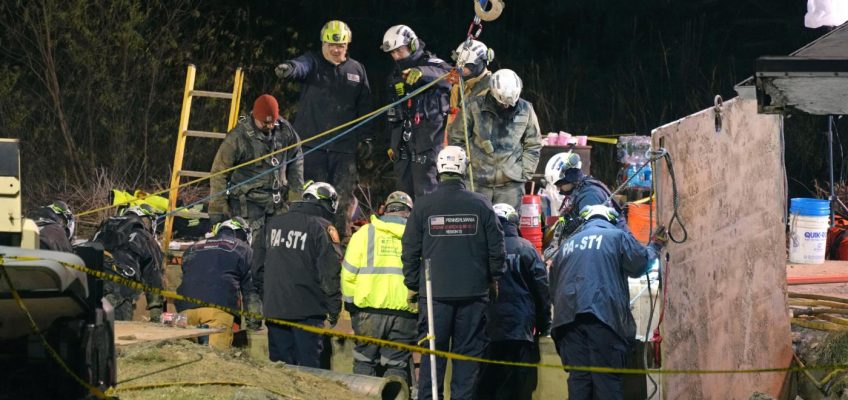By MICHAEL RUBINKAM and MATTHEW BROWN
Swaths of Pennsylvania and many other states are honeycombed with old, unstable mines that can cause the earth to suddenly give way — a phenomenon known as “ mine subsidence ” that poses a threat to people and property.
That’s what searchers in Westmoreland County, just southeast of Pittsburgh, fear led to the disappearance of 64-year-old Elizabeth Pollard. Pollard and a young granddaughter were looking for a lost cat when she went missing Monday evening. At about the same time, a sinkhole appeared roughly 20 feet (6 meters) from where she had parked her car, in an area above an old coal mine. The granddaughter was found safe inside the car hours later, while the difficult and potentially dangerous search for Pollard continues.
Mine subsidence has caused billions of dollars in damage in areas of the U.S. where mining once took place. In Pennsylvania alone, coal was mined in nearly half of the state’s 67 counties and there are at least 5,000 abandoned underground mines, leaving behind hazards that officials say can arise at any time.
The Marguerite Mine that authorities believe resulted in the sinkhole was last operated in 1952 by the H.C. Frick Coke Co., according to the state Department of Environmental Protection. The coal seam in the area is about 20 feet (6 meters) beneath the surface.
The state Bureau of Abandoned Mine Reclamation will examine the scene when the search concludes to see if the sinkhole was indeed caused by mine subsidence, spokesperson Neil Shader said.
There are as many as 500,000 abandoned mines in the U.S. — far outnumbering those that are still active, according to the federal Mine Safety and Health Administration.
In many cases their owners simply walked away from coal or precious metals mines when they became uneconomical to operate and declared bankruptcy, leaving behind safety hazards and costly pollution cleanups that public agencies must handle.
Old mines pose myriad dangers, with 381 people killed and 152 injured at abandoned mine sites nationwide between 2000 and 2013, according to the U.S. Bureau of Land Management.
Victims can fall into hidden shafts, get lost in underground tunnels or perish from poisonous gases present in many old coal mines. Mine shafts can extend hundreds of feet beneath the surface and often are unmarked.
State and federal agencies have sealed off many old mines. But more are discovered every year and officials have yet to conduct basic risk analyses on most of the abandoned mines on federal land.
Besides the safety hazards, millions of gallons of water loaded with arsenic, lead and other toxic metals flows daily from contaminated mine sites without being treated.
Rubinkam reported form northeastern Pennsylvania and Brown reported from Billings, Montana.




